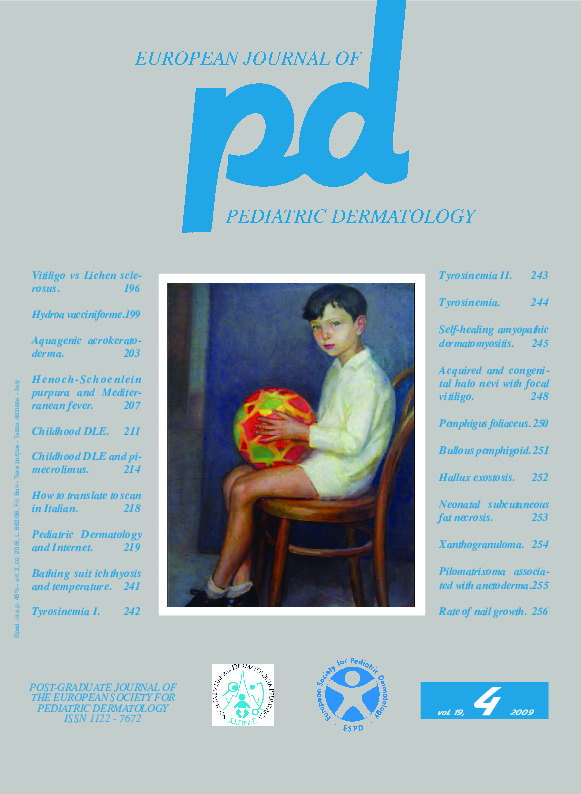Tyrosinemia.
Downloads
How to Cite
Bonifazi E. 2009. Tyrosinemia. Eur. J. Pediat. Dermatol. 19 (4): 244.
pp. 244
Abstract
This term points to the blood accumulation of tyrosine. This accumulation can be due to physiological causes, as in transitory tyrosinemia of the newborn (1), which is due to an immaturity of the hepatic enzymatic systems and thus mainly occurring in the premature baby. The transitory increase of the plasma levels of tyrosine and phenylalanine lasts usually the first 12 weeks and is asymptomatic. Pathological tyrosinemia can be secondary to whatever failure of liver cells or primary. There are three primary forms genetically transmitted and due to different enzyme mutations, namely tyrosinemia I or hepato-renal, tyrosinemia II or Richner-Hanart syndrome and tyrosynemia III, the rarest form, characterized by neurological signs. Tyrosine is named after the Greek term "tyros" namely cheese, because it was discovered in the cheese casein. Chemically, it is hydroxyphenylalanine, a not essential amino acid, being possibly be synthetized by the organism from phenylalanine. It is important because precursor not only of catecholamines -the addition of a second group OH leads really to dihydroxyphenilalanine or L-DOPA-, but also of thyroxine, melanin and mainly because its phosphorylation plays a significant role in the signal transduction and in the regulation of the enzyme activity.Keywords
Tyrosinemia

